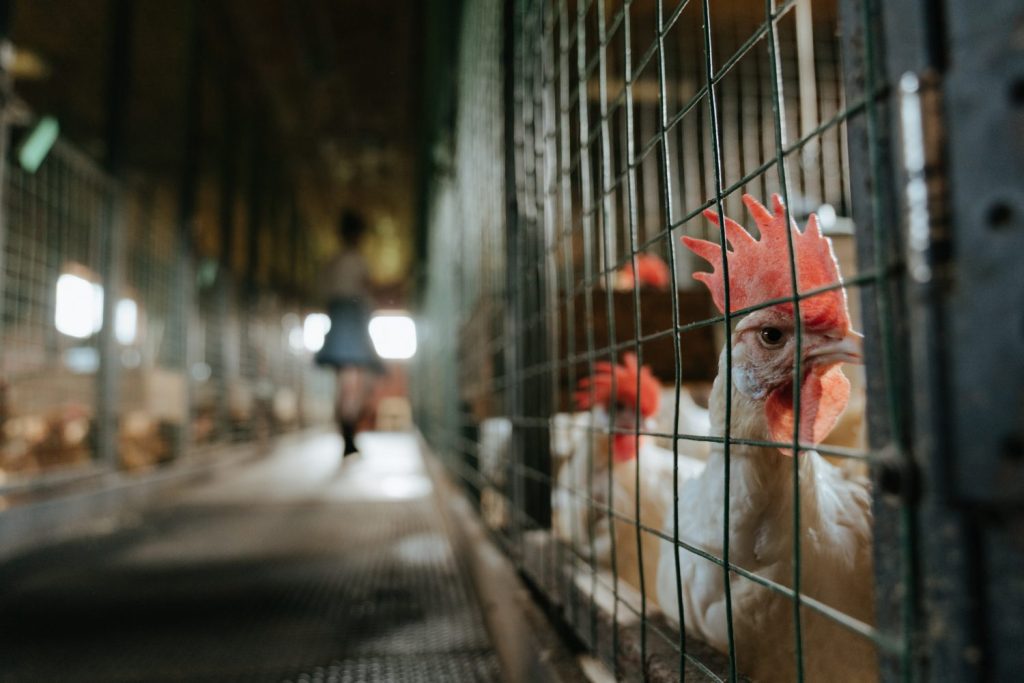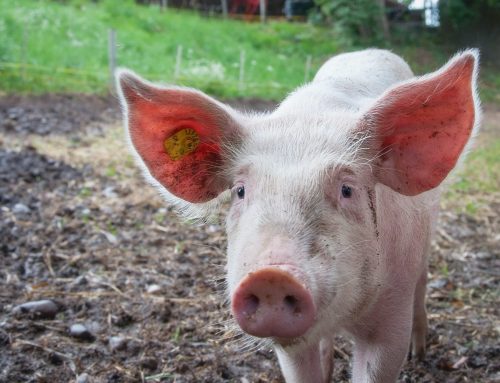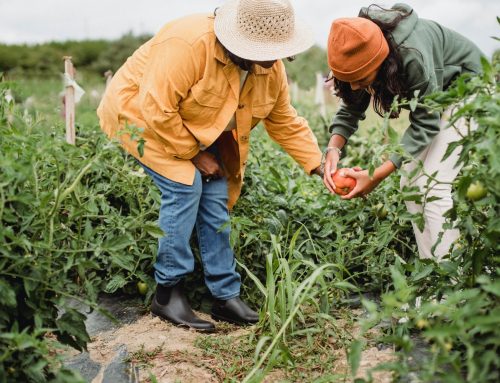AFSA Information Sheet: Australian Animal Welfare Standards and Guidelines for Poultry
The Australian Food Sovereignty Alliance (AFSA) flags new Australian Animal Welfare Standards and Guidelines for Poultry, released by the Federal Government Department of Agriculture, Forestry and Fisheries (DAFF). We ask that our pastured poultry and other livestock farmer members read through all changes relevant to them.
AFSA is concerned with misleading claims circulated by the media that these changes mark “the end of battery caged chickens and eggs”. While marked improvements for poultry welfare, such as larger cages and additional furnishings, are noted in the changes, birds are still confined indoors. With a third year of La Nina likely to happen, AFSA is calling on a Senate Inquiry into intensive livestock, to mitigate the threat of emerging zoonotic diseases on animal and human welfare.
This information sheet offers an overview of relevant changes to Australian Animal Welfare Standards and Guidelines for AFSA members. We welcome you to share this document widely to ensure our community is across these changes.
What do new Standards and Guidelines for Poultry mean for AFSA farmer members?
A1 – Responsibilities
AFSA notes no major changes here. Persons must take reasonable actions to ensure the welfare of poultry under their care, and any person involved in that must be competent. AFSA members can refer to guidelines for more details on what competency means in this case, such as relevant experience, formal training and on-the-job training records.
A2 Feed and Water
We note a slight contradiction between Standards and Guidelines here. The Standard requires poultry to have access to drinking water at least once in each 24-hour period, whereas the Guideline states that water should be continuously available.
Guidelines under GA2.5 states that feed should be kept indoors away from adverse weather, vermin, wild birds and other livestock, although members should note this is not enforceable unless legislated by state governments.
A3 Risk Management of extreme weather, natural disasters, disease, injury and predation
AFSA members and the wider public should take particular note of this section. Changes require a person in charge to take reasonable actions to protect their poultry from threats including extremes of weather, drought, fires, floods, disease, injury and predation.
Farmers, breeders and anyone who keeps poultry needs to have thought about and have plans in place to manage these potential events and protect their birds – including flooding, fire, disease, parasites, etc.
So, if you live in a flood prone area, you need to have a plan in place on how you’ll manage flooding with regards to your birds.
This section also requires a person in charge to take action for sick, injured and diseased poultry at the first reasonable opportunity. Unusually, it does not refer to medications being provided that are only licenced and approved for use on poultry.
The last standard, SA 3.9 requires a person in charge to have a written contingency plan to minimise the impact of adverse events on poultry welfare. This is relevant for backyard poultry keepers, anyone that has a few pigeons, through to pastured poultry farmers, breeders, and large-scale industry. Everyone must have a written plan in place under new requirements.
A5 Management of outdoor systems
This section contains a number of existing and new standards relevant to AFSA members and the wider community:
- SA 5.1 – ensuring poultry are adequately feathered before access to an outdoor area.
- SA 5.2 ensuring that the birds have ready access to housing and shaded areas.
- SA 5.4 states poultry must not be kept on land which has become contaminated with poisonous plants or chemicals which could compromise the health of poultry.
- SA 5.5 – the person in charge must take reasonable actions to minimise access to poultry feed and drinking water by wild birds.
- SA 5.6 – anyone with poultry must be able to confine their birds to manage welfare risks (by 1 July 2032). The confinement must meet the housing standards within A4 Facilities and equipment, and stocking densities relevant for the species of poultry.
We note that new Standards under SA 5.4 might be a point of contention for farmer members, considering the recent publication of heightened lead levels within soils across capital cities. On some farms, we note that there are plants that could compromise the health of poultry if consumed, however chickens are selective with what they will eat and what they will not. As such, the concerns addressed in this Standard are often not a problem on well-managed pasture. AFSA argues that the threat of poisonous plant species on poultry welfare should be addressed through management practices.
A6 Lighting
This section requires that people in charge of poultry, by 1st of July 2025, must ensure minimum lux levels are maintained at bird level. Folks can comply with this quite easily by using a lux meter smartphone app.
The standards on minimum dark periods are still ridiculous – in some instances permitting close on continual 24hr light, or 11.5hrs light then 0.5hr dark, repeat to facilitate unnatural rapid growth (SA 6.4, 6.5, 6.6).
A7 Temperature and ventilation
AFSA welcomes a new addition here to ensure poultry welfare under SA 7.5, where persons in charge must ensure the brooder is at the correct temperature before placing day-old chicks and that temperature is managed to minimise risks to those birds.
A9 Handling and husbandry
AFSA also welcomes new changes to the Code of Practice, where fasting-induced moulting is now prohibited (SA 9.5), and non fasting-induced moulting is restricted (SA 9.4).
In addition, the standard SA 9.23 and 9.24 require persons in charge to ensure unhatched embryos are humanely and rapidly killed, as are cull (or deformed hatchlings) and excess.
Unexpected additions noted by AFSA include pinioning, castration or caponsing, and devoicing is now permitted to be performed by a vet (SA 9.7), where this was previously prohibited.
The standards (SA 9.9, 9.10) also allow for desnooding, dubbing, despuring, web marking and toe trimming on certain birds, and does not require a vet to perform these procedures,
These procedures are allowable without pain relief as there’s none registered or available.
A10 Humane killing
Overall, AFSA commends additions to this section, which prohibits inhumane and painful methods of killing poultry,
The guidelines include appropriate means to humanely dispatch birds requiring it. Humane killing is required to be carried out by a person with the relevant knowledge, skills and experience (unless the bird is suffering and needs to be killed quickly to prevent continued undue suffering).
Part B – Standards relevant to commercial production (all previous standards still apply)
B1 Laying chickens
This section has led to misleading claims circulated on social media regarding the phasing out of caged chickens and poultry. AFSA farmer members and the wider community should take note of relevant changes and work to refute misinformation.
Conventional caged birds as we know them are being phased out, but not to the extent that we will only have barn raised and free-range or pasture raised eggs. The Federal Government is introducing new definitions around confined/caged chickens, where they are provided with a slightly larger cage and some furnishings.
Standards now require that poultry are confined at a minimum to 750c㎡ per bird, with a nesting box area and 55cm (height) perch. This is a vast improvement to previous standards, which only required 550-600c㎡ per bird and 35-40cm (height) perch. However, we note that standards still allow for poultry to be confined in cages, indoors.
AFSA notes that cage systems are in the process of a slow phase out approach – up until 1 July 2036 for anything installed after 31 Dec 2014, slightly earlier for systems installed before then.
Other relevant standards to our members include SB 1.7, where a nest area must be provided for every 7 birds (or 1㎡ nesting area per 120 birds). Eg. if a shelter holds 350 birds, it should have 50 nest boxes, or 2.92㎡ of nest area.
This section contains a number of contentious guidelines, however we note that these guidelines are not legally enforceable at this stage.
For example, GB 1.21 recommends not having feed and drinking water in outdoor areas.
B2 Meat chickens
AFSA notes no major changes for its members here. There has been some slight reductions of allowable kg/㎡ for ventilated sheds (5% reduction), but identical for non ventilated.
Other notable items include ensuring enough space to allow all birds to sit at the same time. And ensuring water is available until the start of pickup on collection day for slaughter. (SB 2.7, 2.8, 2.9)
This section also recommends against outdoor feed and drinking water, however it is a non-enforceable guideline at this stage.
B3 Meat and laying chicken breeders
This is a new section that was not addressed in the previous Code of Practice. AFSA notes concern with some standards that do not consider the scale and nature of pastured poultry, which may lead to further regulatory burdens for farmer members, including:
- SB 3.6 a person in charge must provide access to perches and/or platforms for chicken breeders over 7 days of age.
- SB 3.7 minimum roost space of 15cm per bird, SB 3.8 a person in charge must provide chicken breeders access to a scratch area and/or claw shortening device.
- SB 3.9 nest box for every 7 birds. Stocking densities have also been introduced that mimic the new stocking densities for laying hens.
AFSA will advocate for exemptions for pastured poultry farmers under these new standards, and welcome any members impacted by these changes to email us (admin@afsa.org.au).
Omissions from the previous Code of Practice
- The amount of space required per bird of feed trough and waterer has been removed. These were listed as requirements for cage systems.(2.3.1, 9.3.1) and guidelines for non cage systems (appendix 2, A.2.2).
- The recommended height and spacing for perches, and distances from the wall have been fully removed (2.4.3).
- The new standard includes the same width for a perch, but makes reference to a platform. The previous standard had a size of 450 cm^2 per bird, but this is not included anywhere in the new standard (2.4.3).
- There is no longer a requirement to have systems in place to prevent the ambient temperature from exceeding 33⁰ Celsius (7.2.3, 7.2.4).
- There is no longer a requirement for the water to be cool in summer and maintained below a temperature at which the birds refuse to drink (10.2).
- There is no longer an explicit requirement to only provide medication in accordance with manufacturer’s instructions unless professional advice has been given to vary (12.9).
- The practice of trimming spurs on adult breeding birds to prevent injury to hens was included in the old code, but no reference is made in the new standards (13.5.2).
- As mentioned previously, the practice of castration was listed as an unacceptable practice and should not be undertaken. This prohibited practice is now permitted (13.7.1).
- As per castration, de-voicing was previously prohibited but now allowed (13.8.1).
- As per castration, pinioning was previously prohibited but now allowed (13.9).






